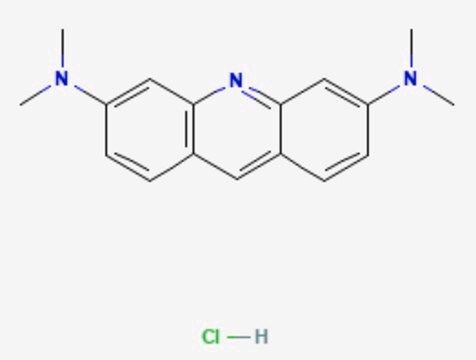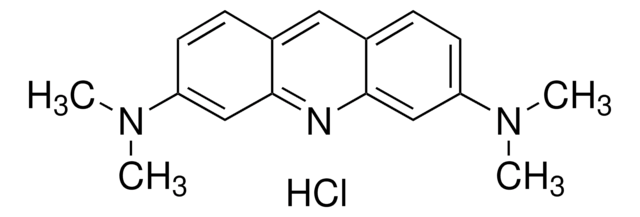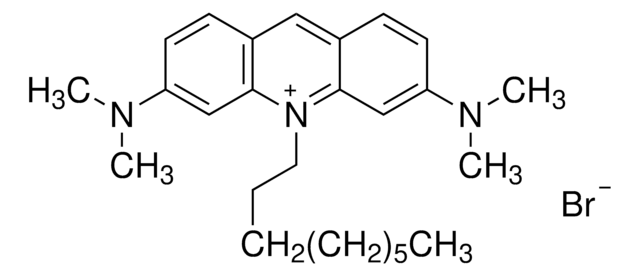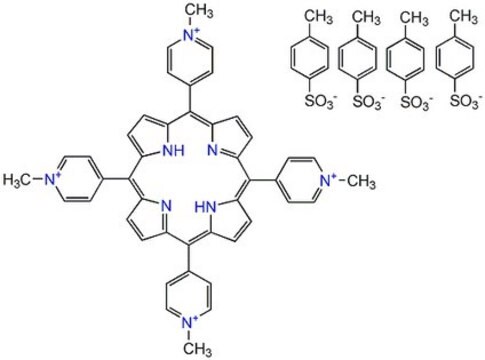Wichtige Dokumente
235474
3,6-Bis-(dimethylamino)-acridin
Dye content 75 %
Synonym(e):
Acridinorange-Basis, Solvent Orange 15
About This Item
Empfohlene Produkte
Form
powder
Qualitätsniveau
Zusammensetzung
Dye content, 75%
Methode(n)
microbe id | staining: suitable
mp (Schmelzpunkt)
165 °C (dec.) (lit.)
Löslichkeit
1 M HCl: 1 mg/mL, clear
λmax
488 nm
ε (Extinktionskoeffizient)
≥14000 at 227-233 nm
≥20000 at 289-295 nm
≥35000 at 486-492 nm
≥40000 at 266-272 nm
Anwendung(en)
diagnostic assay manufacturing
hematology
histology
Lagertemp.
room temp
SMILES String
CN(C)c1ccc2cc3ccc(cc3nc2c1)N(C)C
InChI
1S/C17H19N3/c1-19(2)14-7-5-12-9-13-6-8-15(20(3)4)11-17(13)18-16(12)10-14/h5-11H,1-4H3
InChIKey
DPKHZNPWBDQZCN-UHFFFAOYSA-N
Suchen Sie nach ähnlichen Produkten? Aufrufen Leitfaden zum Produktvergleich
Allgemeine Beschreibung
Anwendung
Lagerklassenschlüssel
11 - Combustible Solids
WGK
WGK 3
Flammpunkt (°F)
Not applicable
Flammpunkt (°C)
Not applicable
Persönliche Schutzausrüstung
Eyeshields, Gloves, type N95 (US)
Hier finden Sie alle aktuellen Versionen:
Besitzen Sie dieses Produkt bereits?
In der Dokumentenbibliothek finden Sie die Dokumentation zu den Produkten, die Sie kürzlich erworben haben.
Kunden haben sich ebenfalls angesehen
Unser Team von Wissenschaftlern verfügt über Erfahrung in allen Forschungsbereichen einschließlich Life Science, Materialwissenschaften, chemischer Synthese, Chromatographie, Analytik und vielen mehr..
Setzen Sie sich mit dem technischen Dienst in Verbindung.








